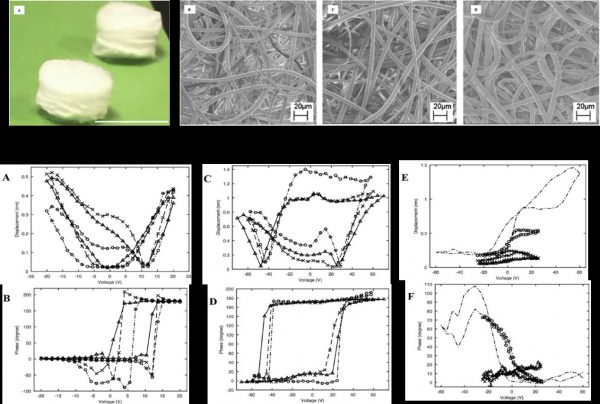三维压电纤维支架选择性地促进间充质干细胞分化
|
内源性电场在胚胎发育,伤口愈合和肢体再生过程中发挥着重要作用。这些电活性的产生与细胞外基质材料如胶原和粘多糖紧密相关,因为它们具有压电活性,能够将机械能转化为电信号。骨和软骨也包含这些物质,因此当受到应力刺激时会有电信号生成。但将压电效应应用到组织工程领域,目前研究较少。 最近新泽西理工学院Treena Livingston Arinzeh课题组,将压电材料聚偏氟乙烯制成柔性三维多孔支架,用于刺激间充质干细胞分化,并在模拟生理复合条件下有相应的细胞外基质和组织生成。研究发现压电材料产生的低电压和流动电势促进间充质干细胞向软骨分化,高电压促进向成骨分化。与单独的机械刺激相比机电刺激更有效的促进间充质干细胞分化。 Endogenous electrical fields have been well established during embryonic development, wound healing and limb regeneration. The electrical activity generated can be associated with extracellular matrix materials, such as collagens and glycosaminoglycans (GAGs), which display piezoelectric activity. Specifically, they are capable of converting mechanical Recently,Treena Livingston Arinzeh from Department of Biomedical Engineering, New Jersey Institute of Technology found that piezoelectric materials can be fabricated into flexible, three-dimensional fibrous scaffolds and can be used to stimulate human mesenchymal stem cell differentiation and corresponding extracellular matrix/tissue formation in physiological loading conditions. Piezoelectric scaffolds that exhibit low voltage output, or streaming potential, promoted chondrogenic differentiation and piezoelectric scaffolds with a high voltage output promoted osteogenic differentiation. Electromechanical stimulus promoted greater differentiation than mechanical loading alone. 王鹏
|
